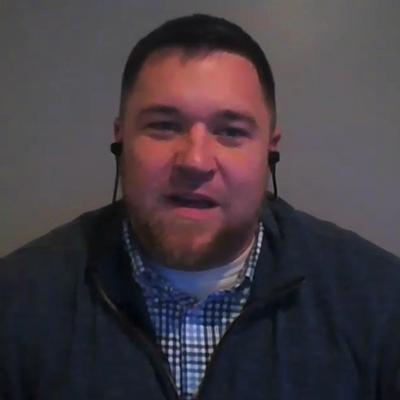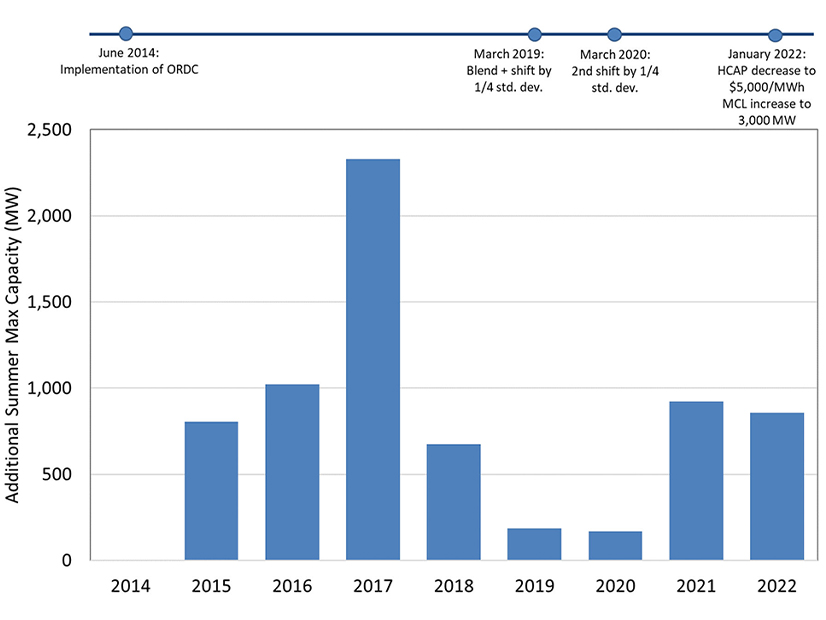Vote on Multi-schedule Modeling of Combined Cycle Units Deferred
VALLEY FORGE, Pa. — The PJM Market Implementation Committee deferred a vote on adopting a problem statement and issue charge to discuss combined cycle modeling in the market clearing engine (MCE).
Following a lengthy back-and-forth on how broad the scope of the issue charge should be, PJM revised its proposed framework for the process.
The use of multi-schedule modeling for combined cycle is being considered as MCE software provider General Electric collects design preferences from PJM while building its Next Generation Markets Systems (nGEM).
Much of the discussion has focused on what types of schedules and selection methodologies should be considered in scope. PJM had initially presented a narrower issue charge that would have limited the scope to the “schedule selection process for commitment and dispatch for day-ahead and real-time energy market for all resource types outside of the MCE.” (See “Feedback on Issue Charge, Problem Statement for Combined Cycle Modeling,” PJM MIC Briefs: Dec. 7, 2022.)
After several stakeholders expressed concern that the issue charge was too narrowly focused on a specific solution rather than an issue, and Deputy Monitor Catherine Tyler presented an issue charge with a broader approach, PJM agreed to include a handful of items to be in scope.
Tyler said that of the six options that PJM had identified in its white paper as solutions to the issues, PJM had attempted to define four options as out of scope and therefore not part of the discussion.
PJM opposed the Monitor’s proposal to include additional education in the issue charge, and stakeholders ultimately voted, with 60.8% in support, to defer adoption of the problem statement and issue charge to the MIC’s March meeting to allow for more time to review the revisions.
In a white paper that PJM’s Keyur Patel presented to the MIC, PJM stated that applying multiconfiguration modeling to its enhanced combined cycle model would allow for the MCE to capture the characteristics of individual resources and improve their dispatching. The number of configurations and schedules combined cycle units can present could lead to exponentially increasing times for the engine to complete optimization calculations.
PJM believes the best solution would be to adopt a design that would only enter one schedule to the MCE for commitment, according to the white paper. In seeking to limit the scope, the paper said that PJM is seeking to resolve the calculation issue while minimizing the impact to the current market rule.
Patel also said PJM is on a time crunch to reach a solution by the third quarter, when GE is set to begin incorporating the RTO’s guidance into a new software package.
Tyler argued that PJM’s preferred solution of using a specific and flawed predefined formula for schedule selection would weaken market power mitigation rules and fail to address issues with their implementation that the IMM has identified for many years.
Stakeholders Consider Recognition of Local Impacts to Net CONE
PJM presented a first read of the updated default gross cost of new entry (CONE) and avoidable cost rate (ACR) figures it is proposing through its quadrennial review. The new parameters will be used for the 2026/27 delivery year.
All resource types, except storage, would see their gross CONE figures increase, largely because of the Inflation Reduction Act’s changes to the investment tax credit (ITC) and new reference resources used for combined cycle and onshore wind resources.
The main changes to gross ACRs proposed are the addition of steam oil and gas as a new resource type, additional data from the Nuclear Energy Institute on nuclear costs, and refined property tax and insurance costs. Single-unit nuclear generators were the only resource type to see a decrease in default ACR.
Gas resources would see the largest increase under the new numbers, with combined cycle units increasing to $540/MW-day of nameplate output from the 2022/23 gross CONE of $320, a nearly 69% increase. Combustion turbines would go up to $427/MW-day from $294, a 45.2% increase.
Local Considerations for Net CONE
Stakeholders also discussed their interests and goals as they consider whether to allow PJM to include state and local issues in the formation of net CONE.
The items added to the interest identification matrix include ensuring that the net CONE established for an area reflects the most environmentally restricted asset life; avoiding substantial changes to the methodology of setting the end figure without considering the impact to the variable resource requirement (VRR) curve; and ensuring that the role of net CONE and the VRR curve are consistent with state policies that impact the parameters.
Paul Sotkiewicz, president of E-Cubed Policy Associates, said he supports having an estimate of the CONE for constrained locational deliverability areas (LDAs) in instances where there are environmental restrictions such as legislation or regulations reducing the asset life.
“The reason this issue has been brought up is because of what’s been going on in Illinois and potentially in New Jersey,” he said. “Clearly they’re moving in the direction of a much cleaner fleet, and that eventually could have implications.”
First Read of PJM Proposal on Co-located Load
PJM presented a proposal to define market rules for load behind a generator’s meter months after the MIC rejected two competing proposals from the Monitor and Constellation Energy and Brookfield Renewable Partners. (See “Limited Support for Co-located Load Proposals,” PJM MIC Briefs: Dec. 7, 2022.)
The previous discourse around the proposals centered on their treatment of co-located load that is not directly interconnected with the wider PJM grid and whether the generator should be permitted to retain its capacity interconnection rights (CIRs) for the portion of its output that serves that load.
Constellation argued that when the behind-the-meter load is highly interruptible and the generator can quickly shift its output back to the grid to fill its capacity obligations, it should be permitted to retain its CIRs.
During a first read of the RTO’s proposal Wednesday, PJM’s Lisa Morelli said generators would be able to retain their CIRs under such an arrangement, but the generator would be subject to ancillary services charges, such as black start, regulation and reserves, for the load. Even without a direct connection to the grid, Morelli said it’s PJM’s belief that the load indirectly benefits from those ancillary services through the generator.
PJM’s Tim Horger said that if a generator and co-located load would not be able to operate independently of the grid, it is reliant on the grid and should have to pay the charges.
Constellation’s Jason Barker said the company is opposed to the proposal, saying it effectively requires host generators to pay for ancillary services that PJM attributes to retail load, who are not PJM members.
Adrien Ford, of the Old Dominion Electric Cooperative, said she is opposed to allowing generators with co-located load to retain the output earmarked for the load and said PJM is trying to draw parallels between co-located load and behind-the-meter generation. She also said there has not been adequate weigh-in on whether co-located load is under FERC or state jurisdiction.
Monitor Joe Bowring indicated his surprise that PJM was now taking the initiative to support Constellation’s proposal, given that it had received no stakeholder support in the RTO’s poll and, he argued, would undermine markets.
No Consensus on Changes to MSOC
Stakeholders were divided on changes that could be made to the marker seller offer cap for the 2025/26 Base Residual Auction to reflect the impact of December’s Winter Storm Elliott. Much of the discourse was in line with the discussion at the Resource Adequacy Senior Task Force’s Jan. 31 meeting, with stakeholders stating that they want additional information about how the 277 performance assessment zones on Dec. 23 and 24 will affect units’ Capacity Performance quantified risk (CPQR) and related parameters. (See PJM Stakeholders Discuss Capacity Market Changes After Winter Storm.)
Jeff Whitehead of GT Power Group said market sellers currently have no insight on how their unit-specific offer caps will be evaluated by the Monitor and PJM. Without a firm understanding of what the status quo looks like, he said it is difficult for stakeholders to start working on solutions.
Bowring said it is fairly simple to include the data from the storm into the IMM’s assessment of their risk, but that risk will vary widely for individual generators, preventing him from speaking in general terms. He encouraged generators to reach out to the Monitor for unit-specific information, but he said no generators had contacted it yet.
Bowring said that for some units, the impact of Elliott would be to reduce their CPQR risk, while for poorly performing resources, the impact would the opposite. “On average, the impact of Elliott on CPQR risk is relatively small. This is the first significant event since the introduction of the Capacity Performance market design.”
PJM’s Dave Anders said implementing changes in time for the 2025/26 BRA, scheduled for June, would have to follow a tight timeline with two possible pathways: delaying the auction, or keeping the bid and clearing timing and seeking FERC approval to alter the pre-auction timeline. Wrapping up Wednesday’s discussion, Anders said he had not heard a preference for either option.


